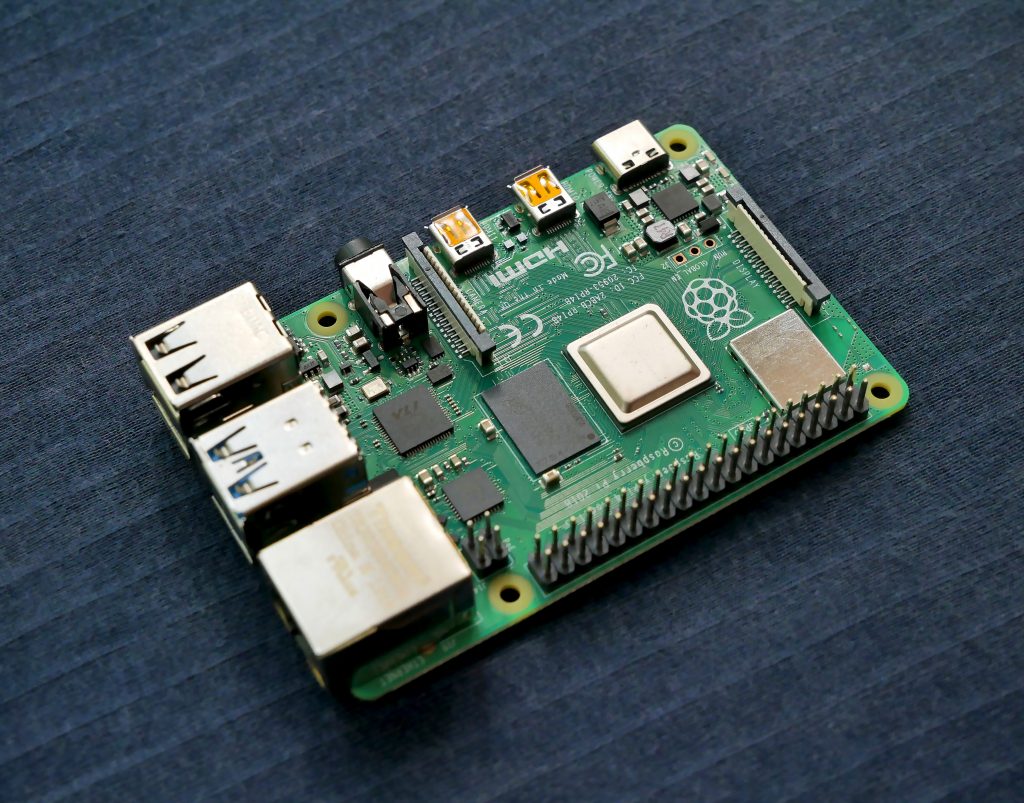
Proof of concept that the Raspberry Pi 4 is powerful enough to be a real computer.
Hello everyone, this post will be a continuation of the Raspberry Pi adventures. For anyone who didn’t check out the last post, It pretty much talk about how I wanted to see what it would be like using a Raspberry Pi as a actual desktop. The only thing was, last time I didn’t have the proper gear. I only had a Raspberry Pi 3 B+ at the time. This time, however I’ve come prepared. I ordered all the right things, set everything up, and let if run for a bit, and now I can actually tell you how it all went. Hopefully this will save someone out there some time and money, and show some people what is possible. Let’s get into it..
Here is a breakdown of all the stuff I had to buy to get this thing working like a champ. I ended up going with the 8 GB version of the raspberry Pi 4, since I knew that I would be using this as a desktop setup. Also, more RAM is always better. I also know that since it is still a Pi, that it would need all the performance help it could get, so I threw in a 256 GB SSD. This time around I wanted the whole setup to look a little better then my last crappy test pi build, so for a case solution I ended up going with the Agon M1 Case. This little guy comes with a decent number of IO ports (including two full size HDMI instead of micro), a great heat sync and fan, and can support an SSD drive. As a bonus it looks awesome as well. When it was all said and done, the whole setup ended up costing me about $200. This was a bit more then I was planning on spending, but I’m still glad that I did it. If you wanted to save a bit of money, you could go with the 4 GB version of the Pi, as I’m seeing that 4 Gigs is actually good enough most of the time.
The first thing I did when all the gear arrived was basically redo the prior setup, which had the Raspberry Pi OS installed. I immediately notices the performance difference. I spent a few days messing around with the new install, doing various tweaks and customizations and then afterwards decided that it was time to bring in the SSD. Once I set the Pi to boot from the SSD, I saw another boost in performance, but honestly it wasn’t as big of a boost as jumping from the Pi 3 B+ to the Pi 4. Even still, it definitely made for a better user experience.
After a bit of time using Raspberry Pi OS, I realized that while its an OK distro, it was just not something that I prefer. I wanted to see if there was anything better out there that for me that had a bit more polish to it. I have done a bit of research in the past on the best distros for the Pi, and have heard that Ubuntu and Manjaro were two of the best alternatives out there for the Pi. I’ve found that the while the latest version of Ubuntu does look really nice, it felt pretty sluggish the whole time. This was also the case after I overclocking and setting it to boot off the SSD. The finals straw for me was when that my Ubuntu setup just died out of the blue after a couple of days. I’m not going to blame the fine folks at Canonical for that, because I’m sure that I was something that I did, but either way I felt it was time to test out Manjaro.
Now this was my first time really testing out Manjaro, aside from a 10 minute VM install in the past, so this was pretty much new waters for me. I have to say though, that for me, Manjaro has been a standout performer. Everything just feels much more snappy and stable. Video playback feels smother. Even memory management feel better. Plus the distro itself feels is very polished and feature rich, while at the same time somewhat light weight. In my opinion, Manjaro is by far the go-to choice for a Raspberry Pi desktop distro. I haven’t even needed to overclock the system, and its running circles around the Raspberry Pi OS and Ubuntu.
A Testament on Usability
For the past month I’ve been daily driving this Manjaro install, and I’ve definitely been giving it a good bit of work. So far, I’ve prepared my taxes on it, I’ve done some work on it, downloaded torrents on it (and keep a few torrents up for weeks at a time). I’ve watched a ton of YouTube on it. I’ve even used this setup to go through a video training series in order to prepare for an upcoming Red Hat certification. As for multitasking, I really wasn’t expecting to be able to multitask that much, but honestly this little beast handles it just fine ( which was not the case with Raspberry Pi OS or Ubuntu ). If you are in need of a relatively inexpensive desktop that is silent, takes up very little physical real-estate, and uses almost zero power, then I would encourage you to give this setup a try!
